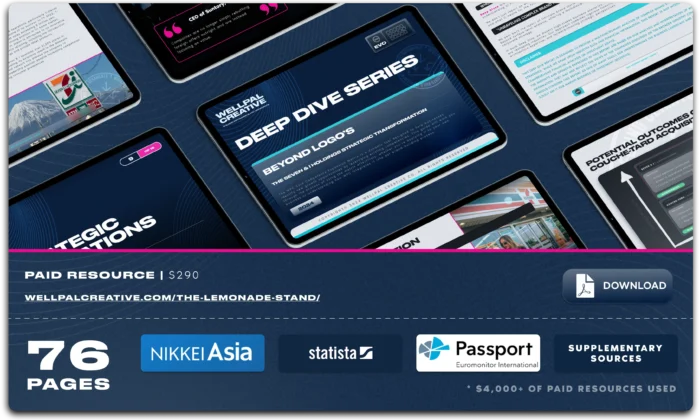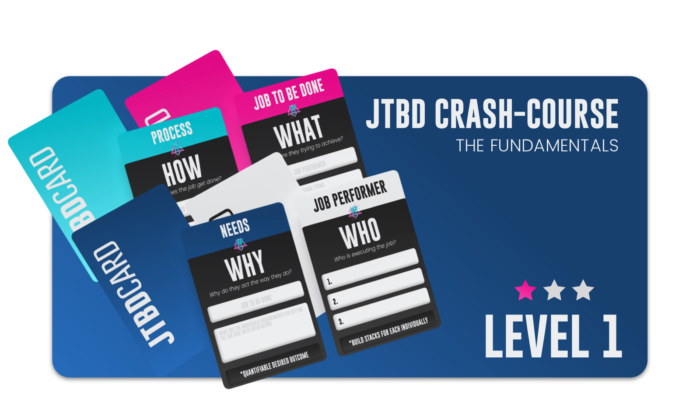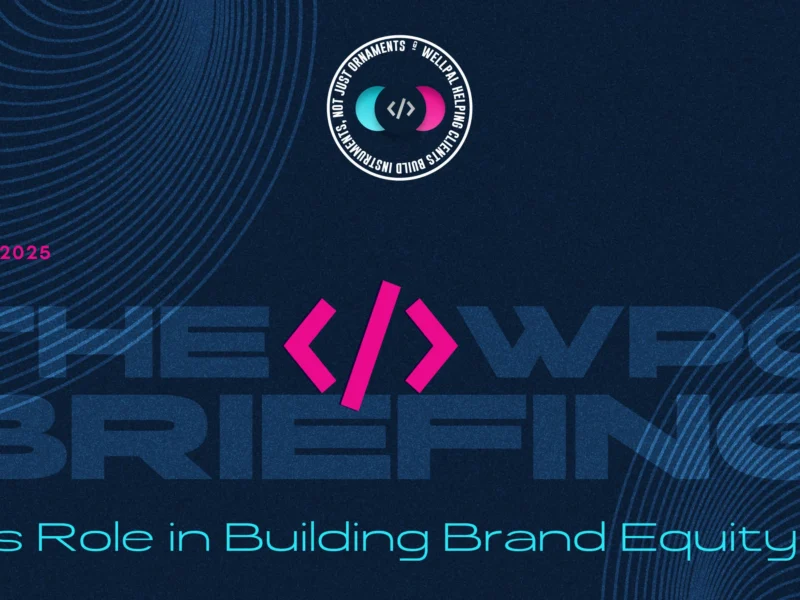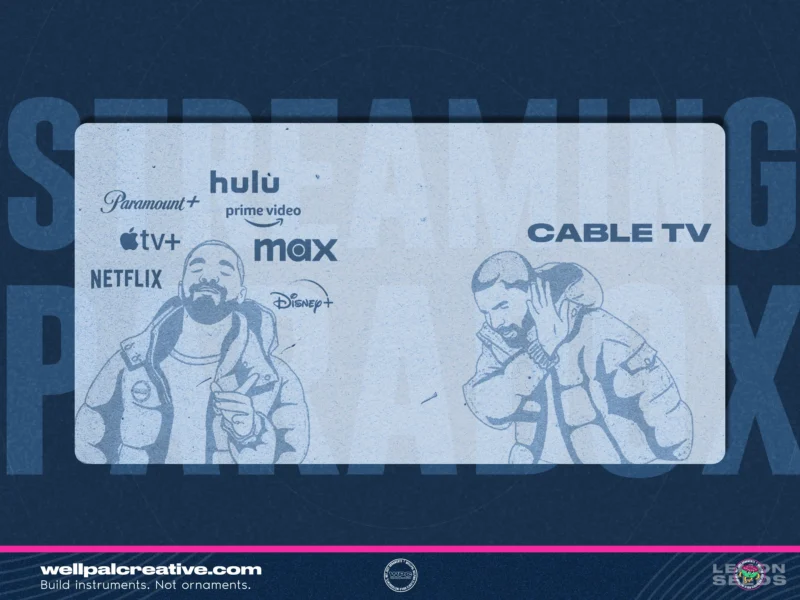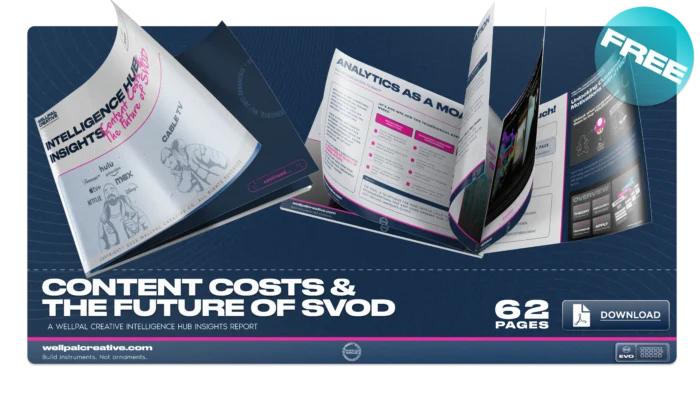COPYRIGHT © 2025 WELLPAL CREATIVE


“Build Instruments. Not Ornaments”
Featured
-
Couche-Tard Acquisition Strategy - Deep Dive Report
$290.00Original price was: $290.00.$200.00Current price is: $200.00. -
JTBD Fundamentals
$200.00
Recent Lemon Seeds
Copyright © 2025|2026 WellPal Creative
Changing the Game
Rethinking Pricing and Strategy Through Game Theory

Context
Rethinking Pricing and Strategy Through Game Theory
Why playing the right game, not just the numbers, is the key to unlocking brand growth and long-term market advantage.
What we will address
Game theory is often misunderstood as a new or revolutionary approach to business strategy. The reality is quite different. Developed formally during the 1940s by mathematicians John von Neumann and Oskar Morgenstern, and further refined with concepts like Nash Equilibrium, game theory has been a foundational part of strategic thought and business education for decades.
What game theory offers isn’t novelty but precision, a dynamic, predictive lens that goes beyond the static snapshots traditional frameworks like Porter’s Five Forces provide. While Porter’s model expertly diagnoses the power dynamics within an industry, identifying forces such as rivalry, supplier influence, or threat of new entrants, it offers limited guidance on how to act. Game theory extends this foundation, modeling the choices, reactions, and strategic moves of interdependent players, from competitors to suppliers and customers.
For example, Porter may tell you that your industry is ripe for a price war, a race to the bottom where margins shrink. Game theory then helps you ask:
- How can you avoid this deadly spiral?
- How can you signal strength credibly, build alliances, or shift the rules of engagement to escape zero-sum outcomes?
It provides the playbook for navigating the “game” of business, where every move provokes reaction and the smartest players shape the game itself rather than passively accept it.
This Lemon Seed invites you to question whether your brand is locked into such an outdated game. Anxiety, margin pressure, and stagnant growth may be symptoms that you are playing a losing hand—stuck in a zero-sum mindset that limits your ability to grow, scale, and build lasting value.
table of contents
Jump Straight to the Essentials
The Broken Game – Are You Playing a Loser's Hand?
How outdated pricing myths and conventional thinking keep your brand stuck in zero-sum competition.
Most brands are trapped by four flawed premises that govern their pricing and competitive mindset:
1. Zero-Sum Thinking
Imagine you’re convinced that your success automatically comes at your competitors’ expense. This mindset treats the market as a pie with a fixed size; if you grab a bigger slice, someone else gets less.
It’s why price wars happen, and why business feels like a constant battle where growth is someone else’s loss.
2. Value Extraction
Many teams focus on squeezing the most money possible from every sale.
“What’s the maximum price we can charge before customers walk away?”
This approach overlooks the potential of building lasting relationships through shared value. It’s like trying to milk a customer dry instead of growing the whole herd.
Customers who feel valued tend to stay and spend more long-term.
3. Static Demand Assumptions
It’s easy to plan with a snapshot in mind, that demand is fixed, customers never change their minds, and competitors won’t help you rewrite the rules.
But markets evolve, customer preferences shift, and technologies disrupt. Relying on a static view is like navigating a river by looking only at calm waters; you’ll be unprepared for rapids and new currents.
4. Numbers Game
Many leaders think pricing is about finding one “perfect” number, an optimal price point that guarantees success.
The problem? Pricing is actually multi-dimensional.
It involves how you package, present, and adjust prices over time in alignment with business goals and customer behavior. Chasing a single number without a strategic context is a bit like trying to win chess by just moving your pieces faster.
These limiting beliefs commoditize brands, create constant anxiety around pricing decisions, erode margins, and stunt growth. But this is only part of the story.
Often, the root cause lies deeper; many organizations are simply playing the wrong game. They adhere to outdated competitive mental models that do not reflect today’s complex, interconnected markets.
This results not from poor execution, but from a fundamental misalignment between strategy, pricing, and market dynamics.
Recognizing that you might be playing a losing hand is the critical first step. It opens the door to reframing your approach, rethinking how you define value, competition, and growth.
That’s what this Lemon Seed aims to inform you about.
exercise 1
exercise 2
The New Rules – From Extraction to Collaboration
Redefining value: It’s not what you take, it’s what you build together.
If Section 1 described the broken game, this section introduces the new playing field, one where growth and value are created not by squeezing competitors and customers but by collaborating, sharing value, and embracing dynamic markets.
The old mindset of value extraction, how much can we take from this transaction?, is giving way to an expansive view: How much value can we build and share to grow the pie? This subtle but profound shift changes everything.
Consider the music industry’s seismic shift from selling albums to streaming subscriptions, or our previous deep dive into the video streaming industry.
Instead of fighting over a fixed number of album sales, streaming services redefined the unit of value, charging per user per month. This innovation grew the market itself, with revenue climbing back to levels not seen since the heyday of physical albums. “Everyone” benefited: artists, service providers, and consumers.
This collaborative growth approach aligns with the concept of coopetition, the idea that even your competitors can be partners in creating new market spaces or expanding existing ones.
The Value Net Framework
To better understand this collaborative mindset, imagine business as a network of value exchange called a Value Net, a schematic map of all players in your market and how they depend on each other.
Vertical Dimension
Along the vertical dimension, resources like labor and raw materials flow from suppliers to your company, and then products and services flow from your company to customers.
Money flows in reverse. Here, cooperation and competition mix: cooperation jointly creates value, while competition divides the pie.
Horizontal Dimension
Along the horizontal dimension, there are players with whom your company interacts but does not transact directly. These are Substitutors and Complementors.
- Substitutors: Alternative players offering customers similar products or services or alternative suppliers providing similar inputs. They are often seen as competitors—the “enemies” you compete against for market share.
- Complementors: Players who provide complementary products or services that enhance your offering. For example, hardware and software companies often complement each other. Complementors tend to be seen as “friends” or allies because they help create more value together.
However, it is often easy to overlook the full complexity of these relationships. Sometimes, substitutors can be collaborators creating joint value, and complementors can also be competitors in certain dynamics. Recognizing this nuanced interplay is vital to mastering the new rules of value creation and capture.
The game is dynamic; customer needs, competitor actions, and technology rapidly evolve, and so must your pricing and value models. Static pricing and fixed assumptions won’t cut it anymore.
Lastly, strategy, not numbers alone, drives pricing choices.
The best pricing model thoughtfully aligns incentives across your business and ecosystem, creating a framework for continual adaptation and growth.
exercise 3
exercise 4
The Strategic Hexagon – Diagnosing Your Playing Field
You can't win if you don't know what game you're in. Introducing the 7 pricing games.
Understanding your market requires more than intuition; it demands clarity about the specific “game” your brand is playing.
The strategic pricing landscape is complex, but it can be simplified using the Strategic Pricing Hexagon framework, which identifies seven distinct pricing games. Each game reflects different market dynamics, competitive forces, and customer behaviors.
The seven pricing games
1. Value Game
You set your price based on how much unique value your product delivers to specific customers, think of it as getting paid for what makes you different and better, not just what it costs to make.
This works best when your offering genuinely stands out and customers can feel (or measure) the extra benefit they’re getting.
2. Uniform Game
Everyone pays the same price, no matter who they are. This approach keeps things simple, easy for customers to understand, and for you to manage.
The real challenge is balancing prices so you don’t lose sales from people who want a deal or leave money on the table from those who would happily pay more.
3. Cost Game
Here, your pricing is closely tied to how efficiently you can produce and deliver.
The aim is to be a low-cost operator in a market where customers mostly care about price, think basic utilities, bulk goods, or heavily commoditized offerings.
4. Power Game
Big deals and major contracts are the norm. In markets where a few buyers or sellers hold most of the cards, prices are set at the negotiating table.
If you’ve got something someone else really needs, and not many alternatives exist, you can push for higher prices. If the shoe’s on the other foot, expect tough price pressures.
5. Custom Game
You don’t just offer stock pricing; you flex. Deals, discounts, and one-off offers are used to win key customers or outmaneuver competitors.
This game requires agility and good judgment, but if you get sloppy, margins can erode fast.
6. Choice Game
It’s all about how you package and present your products or plans.
By designing bundles or setting price anchors, you subtly steer customers toward higher-value (and usually higher-priced) options, think “good, better, best” packages or cleverly structured add-ons.
Smart framing can boost both sales and perceived value.
7. Dynamic Game
Prices aren’t fixed; they move.
Like airline seats or rideshare fares, you adjust prices based on what’s happening right now, demand, season, inventory, and even competitor moves.
Technology does the heavy lifting, but you need firm guardrails to avoid backlash or confusion.
keep in mind:

Playing the right game requires awareness of your market forces and alignment of your pricing architecture, organization, and brand strategy. Misalignment leads to the anxiety and margin erosion described earlier.
By applying the Strategic Pricing Hexagon, brands gain a clear lens to cut through complexity and start designing effective moves that fit their unique market context.
exercise 5
exercise 6
Your Value Ladder – The Foundation of Strategic Pricing
If you can't measure your value, you can't communicate it, or price it.
At the heart of any effective pricing strategy lies a deep understanding of the real value your brand delivers to customers. This value isn’t just about features or specs, it’s about outcomes and emotional benefits that differentiate you from alternatives.
As with everything WPC writes, delivers, and teaches, there is a synergy between this thinking and the broader WPC solution suite.
For those curious to dive deeper, we offer a fundamentals-focused, self-guided JTBD (Jobs To Be Done) Level 1 program to train brand builders and teams alike. It explores frameworks like the Value Ladder in more depth, aiding you to articulate and amplify your brand’s value more powerfully.
Helps brands break down this value into two key dimensions:
Substitute Value
What are the tangible costs and benefits of your customer’s next-best alternative?
Think of this as the “bare minimum” customers expect when shopping for alternatives: what does the next-best option cost, and what do you get for that price?
By knowing what’s out there, you set the lowest point you can realistically charge; it’s your baseline for negotiating where your price should start.
Usage Value
What functional and emotional benefits does your brand provide beyond the substitute?
This “premium” reflects how your product or service improves customers’ lives or businesses.
Here’s where your brand can shine. Usage value is all the good stuff you deliver beyond what substitutes offer, how your solution actually works better, saves time, solves headaches, or makes people feel good.
It’s both practical (features, results) and emotional (confidence, delight). This extra value is what lets you charge a premium and build loyal fans.
Say you’re selling productivity software. Your substitute value might be whatever manual spreadsheets or basic competitor tools cost customers in time and frustration.
Your usage value? That’s the hours saved, fewer mistakes made, and the relief of not wrestling with clunky processes.
When you can put numbers on these benefits—like “saves 5 hours per week” or “reduces errors by 30%”—suddenly your pricing makes perfect sense to everyone.
Breaking value down this way gives your entire team a shared language for what you’re really selling. It’s not just features or nice-to-haves; it’s a measurable impact that customers can feel in their daily work or life.
This clarity lets you charge what you’re actually worth, not because you hope customers will pay it, but because you can show them exactly why it’s a smart investment.
Without this foundation, pricing becomes a guessing game. You’re either adding a margin on top of costs (ignoring what customers actually value) or throwing numbers at the wall hoping something sticks.
Neither approach builds confidence, yours or theirs, about whether the exchange is fair.
exercise 7
exercise 8
Architecting Your Price – The Model Before The Number
Your pricing model is a strategic blueprint, not just a number.
Pricing isn’t merely about finding the “right” dollar figure; it’s about designing a deliberate architecture that shapes how value is captured and communicated.
A well-crafted pricing model serves as a strategic blueprint that aligns your competitive positioning, customer behavior, and business strategy into a cohesive framework.
It answers critical questions like:
- What do you charge for? Is it per unit, per user, per outcome, subscription, or a combination?
- How are offers structured? Are you selling standalone products, tiered packages, bundles, or platform access?
- What pricing mechanisms are in play? Are prices fixed, negotiable, dynamic, or usage-based?
This architecture can directly influence customer perceptions, behaviors, and their willingness to buy.
Why Pricing Architecture Matters
Pricing architecture isn’t just how you set prices, it’s a strategy lever that can totally change who wins in your market and how much you get paid.
Key Ingredients (click to explore)
These elements transform your pricing model from a static number into a powerful framework, crafting competitive moves that orchestrate how your brand captures and grows value in the marketplace.
Pricing Units
Decide how you charge, per product, per hour, per user, etc.
This shapes who buys and how much.
Example: Tesla sells straight to customers, skipping dealer markups, which matches its “tech premium” vibe and makes buying simple for fans.
Offer Structures & Bundling
Smartly package what you sell.
Bundles help customers climb your “value ladder”; they’re more likely to buy more, stick around longer, and spend more over time.
Negotiation Frameworks
Are your prices fixed or flexible?
This calls the shots on who has the upper hand at the bargaining table. Mastering negotiation lets you hold the line on margins or smartly win new business, depending on your angle.
Dynamic & Usage-Based Pricing
Change prices based on real-time demand or how much people use your product.
This can crank up revenue, but you’ll need solid data and trust. No one likes surprise sticker shock.
How Your Pricing Game Changes
- Usage-based billing signals that you get what matters to customers and helps you grow as they do.
- Bundling amps up cross-sells and gets customers deeper into your ecosystem.
- Negotiation frameworks shift power; sometimes, firm prices protect profits, sometimes, flexibility wins deals.
- Dynamic pricing keeps you quick and competitive, but demands you keep customers in the loop.
Why the Model Matters More Than the Number
Customers don’t just see a price tag; they judge clarity, fairness, and relevance.
A robust pricing architecture aligns sales, marketing, product, and operations, creating a springboard for innovation, market shifts, and adaptive strategy.
Without it, even a carefully chosen price can fall flat; your model, not the math alone, drives real impact.
Putting It All Together
These four “ingredients” are the hands-on levers in your strategic pricing blueprint. When linked thoughtfully, they align price architecture with customer behavior, market positioning, and profitability.
exercise 9
exercise 10
exercise 11
From Architecture to Action
Getting Your Team to Play the Same Game
Building your pricing architecture is just the start. The real challenge? Getting your entire organization to execute it consistently. Your pricing model defines how you want to play, but winning depends on how well marketing, sales, product, leadership, and finance teams actually work together to make it happen.
Without this alignment, even brilliant pricing models fall apart. Complex strategies become disconnected tactics, sales teams start freelancing on deals, and customers get mixed messages about what you’re worth.
Why alignment Matters
Pricing touches everything. When teams aren't on the same page, things get messy fast.
- Sales undercuts prices to close deals, eroding your brand value
- Marketing sends messages that clash with your pricing model, confusing customers
- Product builds features that don’t justify what you’re charging
- Leadership’s big-picture strategy never translates into day-to-day pricing decisions
But when everyone understands and commits to your chosen pricing "game," you get consistent value delivery and a coherent competitive stance.
The PARTS Framework
Use PARTS to manage organizational alignment around your pricing strategy.
1. Players
Who are your key stakeholders (sales, marketing, product, finance, leadership) that shape, approve, and execute pricing? Map their roles and influence.
2. Added Value
How do you define, communicate, and measure value consistently across all teams? Everyone needs the same value story.
3. Rules
What pricing policies, guidelines, and approval processes keep everyone disciplined and on-strategy?
4. Tactics
What competitive and negotiation moves are allowed or off-limits? These should reflect your brand positioning.
5. Scope
What products, channels, markets, and customer segments does your pricing model cover? Be clear about boundaries.
Handling the Politics
Pricing changes always hit resistance, whether from legacy practices, risk aversion, or teams protecting their turf.
- Communicate clearly why pricing changes matter strategically
- Include representatives from all key functions in decision-making
- Train teams to build pricing confidence at every level
- Get strong leadership sponsorship that emphasizes pricing’s role in brand success
When these five areas align, pricing becomes more than a number; it's a strategic game your whole company understands and uses to win.

exercise 12
exercise 13
exercise 14
exercise 15
How WPC Helps You Change The Game
You don’t have to invent your game plan alone. Partnering with WellPal Creative (WPC) means tapping into a fully integrated ecosystem designed to elevate your brand and pricing strategy in dynamic markets.
At the core of our approach is a suite of solutions tailored to support every stage of your brand’s strategic evolution and pricing innovation.
-
1 solution
WPC Ideation & Prototyping (WIP)™
WellPal Ideation & Prototyping (WIP)™ is designed for dreamers and doers alike. Whether you're a startup looking to disrupt the market, a new business aiming to refine your brand, or an established company exploring new horizons, i’m here to help bring your vision to life.
-
2 solution
WPC Brand Navigator™
At the heart of the WPC Solution Suite is the Brand Nav approach, a brand business model tailored for elevating brand equity beyond just the operational aspect. Unlike traditional models, our Blueprint Navigator intricately blends strategic business insights with emotional customer engagement, ensuring your brand not only resonates but also endures.
-
3 solution
WPC Brand Evolution Suite™
WellPal Brand Evolution Suite™ is designed for brands at a crossroads, contemplating a fresh direction. Whether you're a brand who needs an identity refresh, or an established company exploring new horizons, or simply looking for strategic clarity in the clutter, i’m here to help bring your vision to life.
-
4 solution
WPC Visuals
WellPal Brand Visuals is simply the design and graphic aspect of the solution suite. It's for brands craving visual distinction. Beyond aesthetics, we craft visuals that encapsulate your essence, making every interaction across multiple touch points memorable. Brand identity design, visual identity design, UI Design and development, GFX design
WellPal Creative partners with you to define and position your unique brand value using game-theoretic insights. Our integrated suite, from brand strategy and evolution to signature visuals and custom workshops, ensures your pricing and brand game adapt and resonate in dynamic markets. Together, we can craft winning moves that drive a lasting competitive advantage.
Found this insightful?
Share it with your network!
Deepen Your Strategic Edge
Explore curated tools and assets to future-proof your brand’s equity in shifting markets.
Couche-Tard Acquisition Strategy – Deep Dive Report
MORE LEMON SEEDS
THE WELLPAL long-form BUSINESS & BRANDING BLOG

Change the Game

AI’s Role in Building Brand Equity
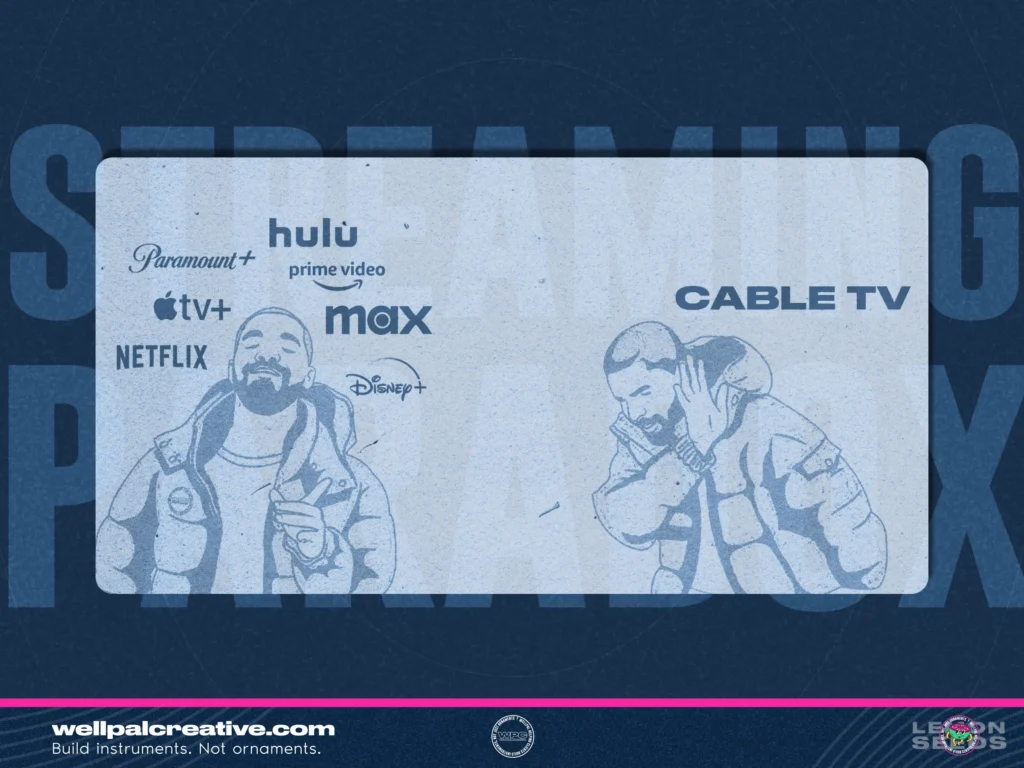
The Streaming Paradox: Convenience vs. Complexity – [LS18 ]

From Hype to Hallucination: How AI Is Transforming Branding, Strategy, and Business – [LS17]
share this brief
custom
"Signal vs Noise” Reports
Get in touch if you’re Looking to Transform market chaos into operational clarity through custom Brand Navigator™-filtered insights.

